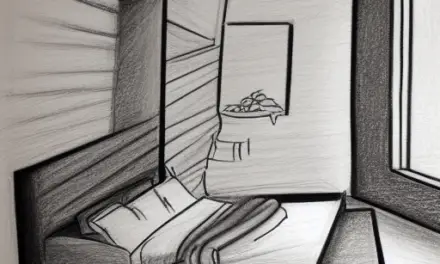If your cat is experiencing balance problems, you may want to seek a professional’s help. There are several things to consider, including Feline vestibular disease, Sensory ataxia, Cerebellar hypoplasia, and Ototoxic medications. However, you must understand the symptoms to know how to identify them and whether your cat needs a veterinarian’s help.
Feline vestibular disease
If your cat is having trouble with balance, she may have a condition called feline vestibular disease. This condition affects the vestibular system, which controls eye and head movements. The symptoms can vary in severity, and they may be temporary or permanent. Your veterinarian may recommend a course of treatment.
The most effective treatment for feline vestibular disease is supportive care. This involves keeping your cat safe and comfortable and making sure she eats. You may also want to consider administering anti-nausea medication. Your veterinarian may also prescribe a medication that can help your cat cope with its vomiting and nausea. Thankfully, this condition is treatable with time, love, and the right medication.
A veterinarian can also order other tests in conjunction with a neurological exam to rule out other conditions that may be causing your cat to have vestibular issues. These tests can include x-rays of the skull and ear, and a spinal tap. These diagnostic tests can rule out other, more serious illnesses.
The main components of the vestibular system are located in two interconnected areas of the brain. In the inner ear, the vestibular apparatus is surrounded by fluid and is located next to the cochlea. In the lower portion of the brain, the vestibular apparatus consists of fluid-filled canals and specialized nerve cells and receptors. The vestibular system maintains equilibrium in animals, and a cat with a disease of this system will have side-to-side head movement.
Cats with this condition can appear clumsy, fall over, and have difficulty walking. They may also have eyes that dart back and forth. If treated, the disease will usually improve on its own in a few weeks. Treatment for this condition will vary depending on the cause, severity, and prognosis.
A vet will diagnose the condition by looking at the ears and other parts of the cat. An MRI will be performed if there are signs of infection or tumors. A thorough physical exam may also be performed. If the diagnosis is confirmed, a vet may perform a neurological exam and CT or MRI of the skull. Diagnostic tests may also include spinal fluid analysis.
Sensory ataxia
A cat with sensory ataxia may develop abnormal gait and balance issues. It may also roll over or tilt its head to one side. This condition can affect a cat’s limbs, head and torso. Symptoms of this condition may vary, but are often related to spinal cord lesions.
Generally, sensory ataxia causes a cat to have unbalanced gait, causing it to fall. Symptoms of sensory ataxia vary in severity and duration. While ataxia can be a harmless condition, it can also be a sign of a more serious disease.
There are several treatment options for a cat with ataxia. Treatment can include anti-nausea medications and pain control. In some cases, surgery may be necessary, particularly if the ataxia is caused by an infection. Some types of tumors may also lead to ataxia.
Sensory ataxia is usually caused by damage to the spinal cord or lesions in the brain. The symptoms are typically uncoordinated gait, including crossing the legs and knuckling the toes. It may also affect the functions of the cerebellum, the part of the brain that controls fine motor movements.
Proprioception is an ability to sense the body’s position and movement. It is this ability that allows a cat to walk without thinking. However, when a cat develops proprioceptive ataxia due to a disease of the spinal cord, it will lose the ability to feel its location. This may lead to wobbling, or limbs may cross over, causing it to fall over.
Symptoms of ataxia in dogs may vary, but the most common is unsteadiness on the feet. Other symptoms include tilting the head and standing with legs apart. The condition can also cause tremors and loss of coordination. Ataxia in dogs can be progressive, with symptoms gradually advancing over time.
Vestibular ataxia is a rare form of the condition. It affects the inner ear and the nerves that transmit the information from the ear to the brain. Cats with vestibular ataxia fall to one side, or oscillate side to side.
Cerebellar hypoplasia
Cerebellar hypoplasia is a common condition in cats, and while many shelters will euthanize these animals, they are not necessarily weak or unhealthy. In fact, these pets can make wonderful pets and live happy, long lives. While they may have some difficulty with balance and coordination, they can be treated and are usually a non-reactive condition.
Cerebellar hypoplasia affects the way animals judge distance and can result in uncoordinated movement. This can cause your cat to jump or move in a strange way. They may also shake while eating or walk in an uncoordinated fashion.
The best treatment for your cat with cerebellar hypoplasia is to provide him with extra care. For example, you may want to provide a large litter box with high sides, or a feeding area with non-slip mats. The symptoms of cerebellar hypoplasia may not worsen with time, so you should take special care to make him as comfortable as possible. However, in severe cases, euthanasia may be the best option.
Cerebellar hypoplasia can also lead to accidents. Since this condition affects the brain’s coordination, your cat may experience falls or even injuries. In addition, cats with this condition may not be able to defend themselves against predators. The condition can also cause your cat to use its claws to balance itself. In addition to these precautions, you may want to make sure your cat stays indoors and has a non-spill food bowl.
Cerebellar hypoplasia can be prevented through vaccination. Your veterinarian can administer a feline distemper vaccination as early as six to eight weeks of age. Your vet can also perform MRI scans to see if the cerebellum is underdeveloped. Other tests may include blood work, electrolyte panel, and urinalysis.
Cerebellar hypoplasia is a developmental disorder that affects a cat’s coordination, balance, and fine motor skills. The most common cause is a cat’s mother’s infection with a virus known as feline panleukopenia. This virus attacks rapidly-dividing cells in the womb and makes the cerebellum grow smaller than it should be.
Ototoxic medication
Whether your cat is suffering from balance problems or is deaf, you should be aware of the symptoms of ototoxicity. These signs can include loss of balance, abnormal eye movements, and head tilt. The condition is generally treatable, but deafness may be permanent.
Ototoxicity symptoms are typically temporary, but can be debilitating in some cases. In mild cases, damage to one ear does not cause dramatic symptoms, but rapid damage can result in a variety of other symptoms, including vertigo, vomiting, and eye jerking or nystagmus. If you suspect that your cat is suffering from ototoxicity, call your vet immediately.
A cat suffering from ototoxicity may also be suffering from ataxia, a condition in which coordination is impaired. This condition affects the torso, legs, and head. It is caused by a lack of activity of the cerebellum, which controls fine motor movements. The affected parts of the body will uncoordinatedly move, and your cat may even sway or fall.
If your cat is suffering from balance issues due to ototoxicity, your veterinarian may prescribe an aminoglycoside antibiotic. This antibiotic is effective against gram-negative bacteria and is inexpensive and widely available. It is typically given topically, but can also be given intravenously or intramuscularly.
A vet will also check the cat’s ears for any signs of ototoxicity, including an unexplained head tilt. This condition may be caused by ear infections or another medical condition. Some treatments may result in a permanent change in your cat’s balance and coordination.
Ototoxicity is a common side effect of antibiotics. It disrupts the inner ear’s sense of balance and can lead to deafness and hearing loss. It can begin suddenly or develop over time. Ototoxicity symptoms may include hearing loss and ringing in the ears.













